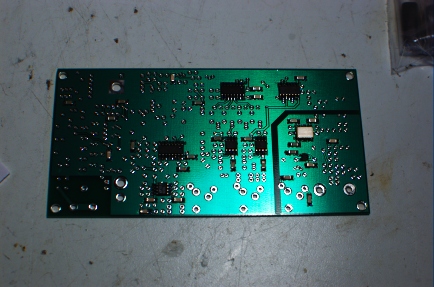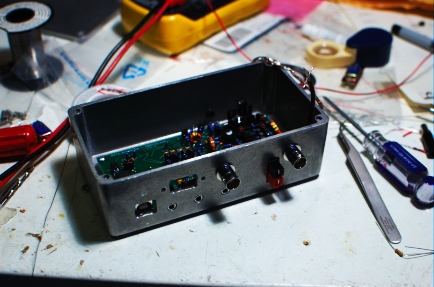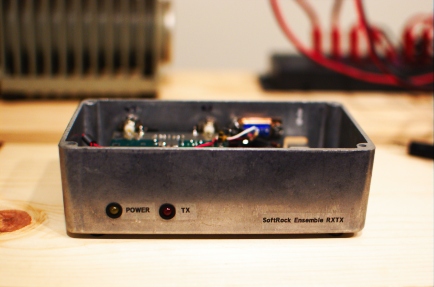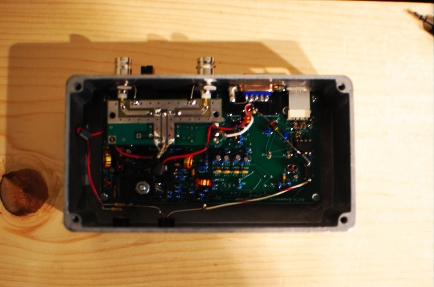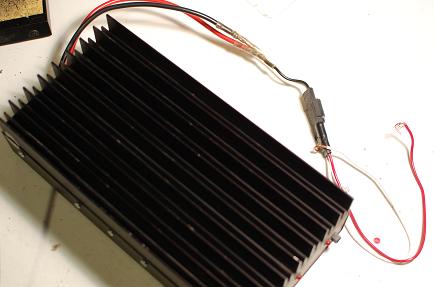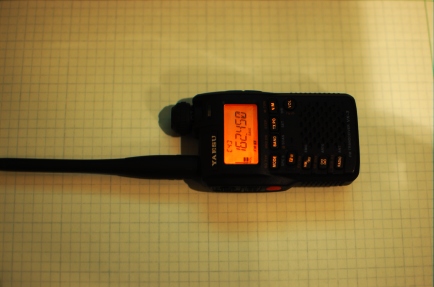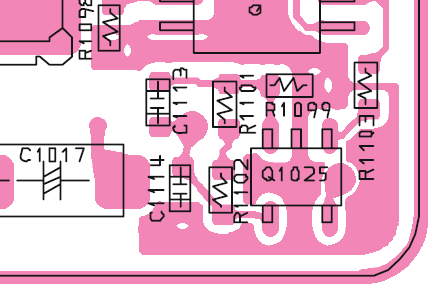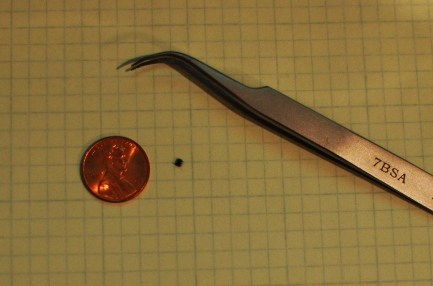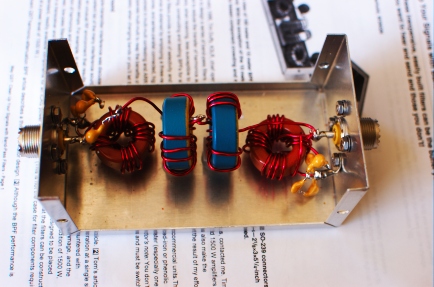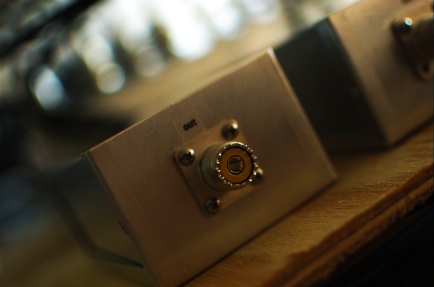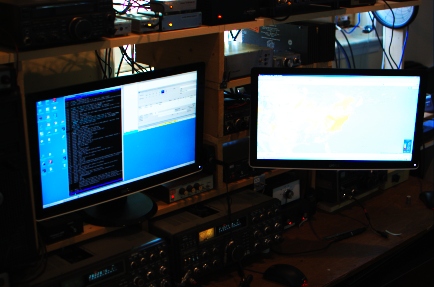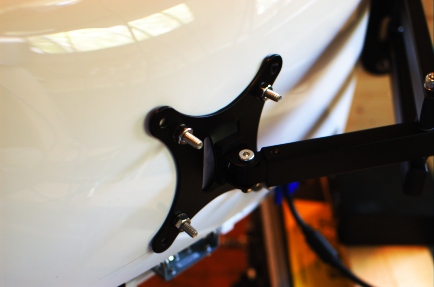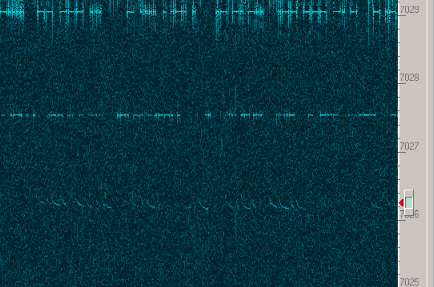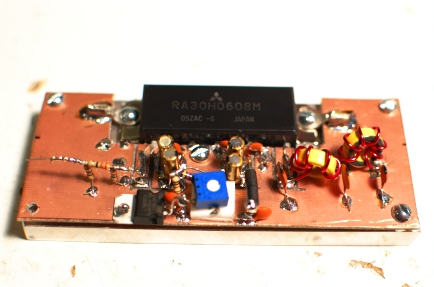So, K3KU, who won last year’s Maryland-DC certificate in A-power (150-watts, no DX cluster) for Sweepstakes CW posted to the contest club e-mail reflector a few weeks ago noting that although he had won that I had nipped at his heels with 7 additional hours of operating left on the table. I responded to the reflector that he had operated long and made more contacts and therefore deserved the win…but, that I was highly motivated by that fact this year.
I tried not to let Sweepstakes consume my home life before the contest since contesting is a major disruption for a married couple, let alone a couple with a four-month baby. So, I did not start setting up and testing the logging software, etc, until Saturday morning of the contest. As long-time readers know, I replaced TR Log for DOS in the Spring with TR4W on Windows XP. I also replaced the real-time keying interfaces (basically an NPN transistor and a resistor attached to a serial or parallel port) with a K1EL WKUSB. This combination worked flawlessly for the most part, although there were a few glitches I need to fix.
Last year, 80 meters was excellent. And, for a city lot station, I have a pretty good setup on 80 (full-size vertical and a K9AY RX antenna). So, even when I had a slow start on 40 meters with the second radio on 20 meters, I had high hopes for a bottomless pit on 80…that never happened. And, something—perhaps related to the lawn mower incident— is wrong with the K9AY. So, I had a solid S9 buzz on 80. When I worked K3AU (op K2YWE), he sent ‘A’ as his precedence and a serial number that was 20% higher than mine. In fact, every time I heard him, that geometric relationship in our scores held. I was worried but plowed forward. The high bands were clearly in good shape because there was always a clear run frequency on 40 and 80.
I operated from the start at 2100 UT on Saturday pretty much straight through until 0700 (3 am local, actually 2 am after the Standard/Daylight time change) on Sunday morning. Slept for about 4.5 hours (an even multiple of 90 minutes, I might point out) and was back at it again. Having not spent much time on 20 the night before, I was keen to get there and was well-rewarded for doing so after scraping up what I could on 80 and 40.
I never really worry about multipliers in SS. Like the “Soviet Russia” jokes go, “In Sweepstakes, multipliers work you.” But, the fact that K3AU was kicking my butt and the fact that I had only 70 sections (out of the possible 80) on Sunday morning was a bit of a motivator to set score aside and make an effort to get “the Sweep” of all 80. My normal (low-sunspot) strategy is to call CQ all day Sunday on 40 meters with the second radio S&Ping on 20 and vice versa. With two more bands definitely in play, this was a different experience. Since I finished the W3NQN filters, I now felt confident that I wasn’t going to destroy my receivers operating SO2R on 15 and 10. However, I soon noticed that there was quite a bit of RF getting into the computer. When I was CQing on 20, keyboard entry to the computer was choppy. It’s very difficult to line-up a second-radio contact when you can’t enter the call! Some ferrite will fix this.
So, I ended up using the second radio mostly as a multiplier monitor. First, I found KE0A (North Dakota) on 10 meters with a roaring pileup. I kept CQing on 40 and 20 with 10 in my right ear until the pileup died. I dumped my call in and worked him on the first try while running off a dozen or so guys on the left radio. SO2R WIN #1! The same thing happened with the elusive VY1EI (who deserves a massive medal—Northwest Territories). However, VY1EI’s pile-up management technique involved moving around in frequency. So, I just waited for him to move and I had the good fortune of being able to study his habits for a half hour without losing rate on the other radio. SO2R WIN #2!
With VY1EI in the log, I only needed Nebraska for the Sweep. And, I was rewarded when W0PQ answered my CQ on 20 at 2242 UT. So, with the Sweep out of the way, I pressed on trying my best to stay motivated and keep the rate up.
Although running (calling CQ) is mentally easier, I found search & pounce much more effective from a rate standpoint for a lot of the contest. I probably should have done even more. TR4W guessed that I made 441 QSOs by running and 294 by S&P. It also says that I called CQ 3870 times. That’s a pretty bad return on investment. Anyhow, here are the numbers from 3830 for the interested:
ARRL Sweepstakes Contest, CW
Call: K8GU
Operator(s): K8GU
Station: K8GU
Class: Single Op LP
QTH: MDC
Operating Time (hrs): 21
Radios: SO2R
Summary:
Band QSOs
------------
160: 0
80: 182
40: 330
20: 170
15: 31
10: 22
------------
Total: 735 Sections = 80 Total Score = 116,000
Club: Potomac Valley Radio Club
Those numbers include 10 dupes (at least two of which duped me several times). But, the score is calculated as 725 x 80 (x 2). Last year, I lost 12 QSOs with two additional penalty QSOs. I’m not optimistic about this year. Last year’s #3 finisher in Maryland-DC is claiming 738 x 80 in 24 hours (and an effort to improve his accuracy). And, K3KU is claiming 716 x 79 also in 24 hours. So, I may have to settle for a spot down in the rankings again this year. After the contest, K2YWE fessed up that his K3AU effort was actually a last-minute switch to Unlimited…so, at least I have a chance despite some mediocre performance on my part this year! It all comes down to the log-checking.
